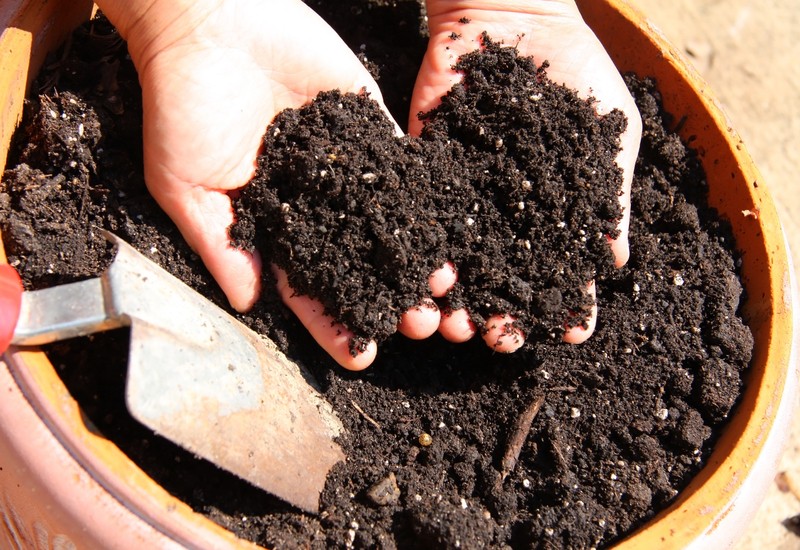The following will give you information about collecting garden soil, moisture retention, drainage, and vital minerals. All are important for great DYI soil.
Collecting Good Garden Soil
Once you have a nice, clean compost ready to mix, you’ll need to collect garden soil. You want to choose from the best soil in your garden to make a rich potting mix. Make sure to screen out any rocks, roots, or other large materials.
You’ll want to sanitize garden soil just as you did the compost. Spread the soil 3″ deep in a tray and bake at 200* for 20 minutes, stirring every 5 minutes.
Mix 5 parts compost with 4 part garden soil. If you will be using the mix to transplant healthy seedlings, you might make it more of a 50:50 ratio. You may have to experiment a little to find which blend works best for you.Add Moisture Retention
Commercial potting mixes typically use Spaghnum peat moss for moisture retention. You can easily substitute aged leaf mold or rotten (untreated) sawdust from home, or a mixture of the two.
If you are just beginning a compost pile, now is also a good time to work on a making leaf mold. Make a pile of leaves 5 feet high, and allow it to break down naturally over time. Build a three-sided bin to keep the leaves contained. It can take up to 2 years for leaves to fully turn to leaf mold. You might toss the pile every so often to keep it mixed up.
Add enough leaf mold or rotted sawdust to the potting mix to allow for good water retention throughout; 1-2 parts leaf mold or sawdust, or a combination of the two.
This sand is actually finer than you would want to use in your homemade potting soil.Don’t Forget Drainage
To ensure good drainage, you’ll also want to toss in 1-2 parts sand. Course sand (almost pebbly) gathered from a local source instead of store-bought sand would be the best option. If the sand is too fine, it will fill the air pockets in the soil and actually reduce drainage.A Dose of Vital Minerals
To top off your homemade potting soil, sprinkle some wood ash over all and mix in well. This will help add calcium, potassium, magnesium, and trace minerals. It is a great alternative to commercially sold lime. Wood ash raises the pH in the soil, helping to neutralize acidity levels. Hardwoods produce ash with more potassium than softwoods.
5 parts compost
4 parts soil
1-2 parts leaf mold
1-2 parts sand
2 Tablespoons wood ash per shovelful of potting soil (or as needed depending on your soil’s acidity levels, which you can have tested at your local county extension office.)
Again we cannot emphasize enough on how important a good compost pile is and to read more and detailed information about this and potting soil check out The Prepper Project. It will talk about short cuts and interesting topics like pasteurizing your compost in a solar cooker!
In todays fast pace world, where even things as simple and organic as potting soil can be complicated, it is nice to know that there is away to go back to the ways of great-great grandpa and give you vegetable garden a wholesome and healthy start!
